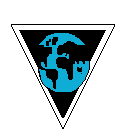|
|
|
|
 |
 |
 |
 |
 |
 |
 |
|
 |
|
|
The project team is rapidly becoming a key business unit of global organizations -- a framework for collaboration, innovation, and ultimately, for delivering results. Project leaders in today's global economy are faced with "real-time" experiences of personal interactions that are enabled by new and emerging technologies — essentially hosting and faciliting team members' interactions in an electronic space. Achieving results means applying collaborative skills and practices like building cross-cultural rapport, and inquiry & advocacy — through technologies such as audio/video conferencing, e-mail, and groupware. Three competency areas have emerged as essential to leadership success in global teams. |
|
|
|
Establishing an Effective Electronic Workspace The mixture of synchronous (phone, video/audioconferencing, screen/document sharing) and asynchronous (e-mail, v-mail, shared databases) technology tools available to team members is growing rapidily. Facilitating agreements around which tools to include in creating an electronic workspace, and how those tools are to be used is a key enabler for effective cross-geography collaboration. |
|
|
 |
 |
 |
 |
 |
|
Cross-cultural Communication Six key dimensions of culture affect business interactions:
- Assertiveness and Directness in communication patterns
- Harmony in social relations (the concept of "Face")
- Power Distance (relationship to status/hierarchy/authority)
- Time (polychronic/monochronic, punctual/flexible, orientated to past/present/future)
- Context/Relationship (The value of personal relationships in conducting business, the need for background/ history, understanding multiple layers of relationships)
- Decision Orientation (group consensual, individual negotiation)
|
|
|
|
Team collaboration processes
- The creation of communications agreements that establish guidelines for using technology tools, frequency and timing of team meetings, and what kinds of information (contextual, technical, etc.) flow through the team.
- Project management maps that open opportunities for team members to document assumptions, distill essential common understandings, specify project outcomes (for individuals and the team), and establish implementation timelines.
|
|
|

